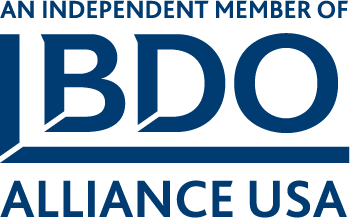By Mark Myers – Director, Accounting and Business Solutions, Crosslin
The golden nugget believed by business owners to be the solution to all their financial concerns is the financial statements for their business, primarily the balance sheet, profit and loss statement, and cash flow statement.
Unfortunately, financial statements standing alone may not reveal everything and tell the whole story. Here are a number of those elements of your business that your financial statements may not tell you.
- Will the business continue to operate into the future as well or poorly as in the past? Related to those uncertainties is the question of whether the business has adequate working capital to continue during the ups and downs of their business cycle. The financial metrics that may be determined from the face of the financial statement at a point in time, may not reveal significant changes that could be made in products or services sold that could result in greatly improved earnings of the business.
- Has fraudulent activity occurred within the business? Irregularities in management decisions that deliberately (or inadvertently) distort the numbers are not always reflective on the face of financials statements. To discover fraudulent activities, often a concerted effort is needed to look at business practices and procedures, including benchmarks, routines, disbursements and bank activity.
- Can the business be compared to peers with only financial statements as a reference tool? Companies may have different accounting policies and methods for similar types of assets, i.e. one company records inventory on the first-in, first-out method, while the second company uses the average cost method. Another difference may be the cost structure such as the employee mix or technology utilization.
- The market value of the business assets is not presented. The balance sheet is primarily recorded at the historical cost of assets, such as property and equipment, Often intangible assets are not reflected as assets on the balance sheet. For example, the expenditures to build the brand or expand a product or service offering are generally charged to expenses instead of an asset, resulting in an understating of the value of the assets. The actual market value of the business is especially important if the owners are looking to sell or merge the business, or begin the process of management succession or estate planning.
- Non-financial factors surrounding the business. Examples may include environmental factors that impact either revenue sources or raw materials, or market demand that may impact the perception of the products or services offered. Other factors to consider are regulatory matters, competition, or changes in key customers or performance not noted until it’s too late. These factors require early and deliberate consideration of the financial and budgetary impact.
- Large contracts for the buy or sell of products at the end of the fiscal year. These types of transactions may cause significant increases in the levels of inventory, accounts receivable, or accounts payable. These increases could create negative perceptions by outsiders of insufficient inventory management, business slow-downs, stale or obsolete inventory, poor accounts receivable management, downturns of product demand, or uncollectible accounts.
- Inclusion of business owners’ personal assets and liabilities could result in an inordinately high debt-to-equity ratio. That metric may make a lender nervous. Generally, businesses should avoid the commingling of personal and business assets, except where tax law provides advantages to consider doing so, i.e. automobiles. The key here is that financial institutions expect full disclosure of any non-business activity that impacts the financial statements or banking relationships.
- The nature of one-time expenses. The appearance of spending bubbles could lead to concerns about cost management and could cause profit margins to not compare favorably to industry peers. One approach to reveal these unusual financial transactions is to present financials in a comparative format, i.e. month-by-month or year-by-year and specific disclosure.
- A change in product sales mix. The influx of low-margin products or a one-time promotional sale at lower margins could cause investors or lenders to be concerned that you are too focused on loss-leaders or are facing heavier competition.
- How do the actual numbers of the business compare to budget? Where does the business want to be as is frequently reflected in the budget? A budget versus actual analysis gives the business owner the opportunity to consider the variances and investigate the cause of both negative and positive differences. A budget without a plan to accomplish the desired result is nothing more than potential that is not yet achieved.
Although financial statements do not reveal everything, your professional accountant, such as those in Crosslin’s accounting and business solutions division, can bring additional information to the forefront of the business owner to mitigate the missing information and to assist in interpreting the data. Additional analysis of the highlights of activities in the business can include a description of the significant transactions that impact the ending numbers in the financial statements, or a description of how the future plans of senior management will enhance revenue through the introduction of higher margin products and services.






